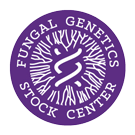Strain: Neurospora crassa
FGSC #1433
Reporting Genes: cy sf
Species: crassa
Allele: C170c C170sf
Alternate Strain Number: C170 9740-3A
Depositor: MBM
Linkage Group: IL IL
Mating Type: A
ref1: M.B. Mitchell 1963 Genetics 48:553-559 M117a, https://www.genetics.org/content/genetics/48/4/553.full.pdf
Genes
